Applying First Aid for Biting Midges
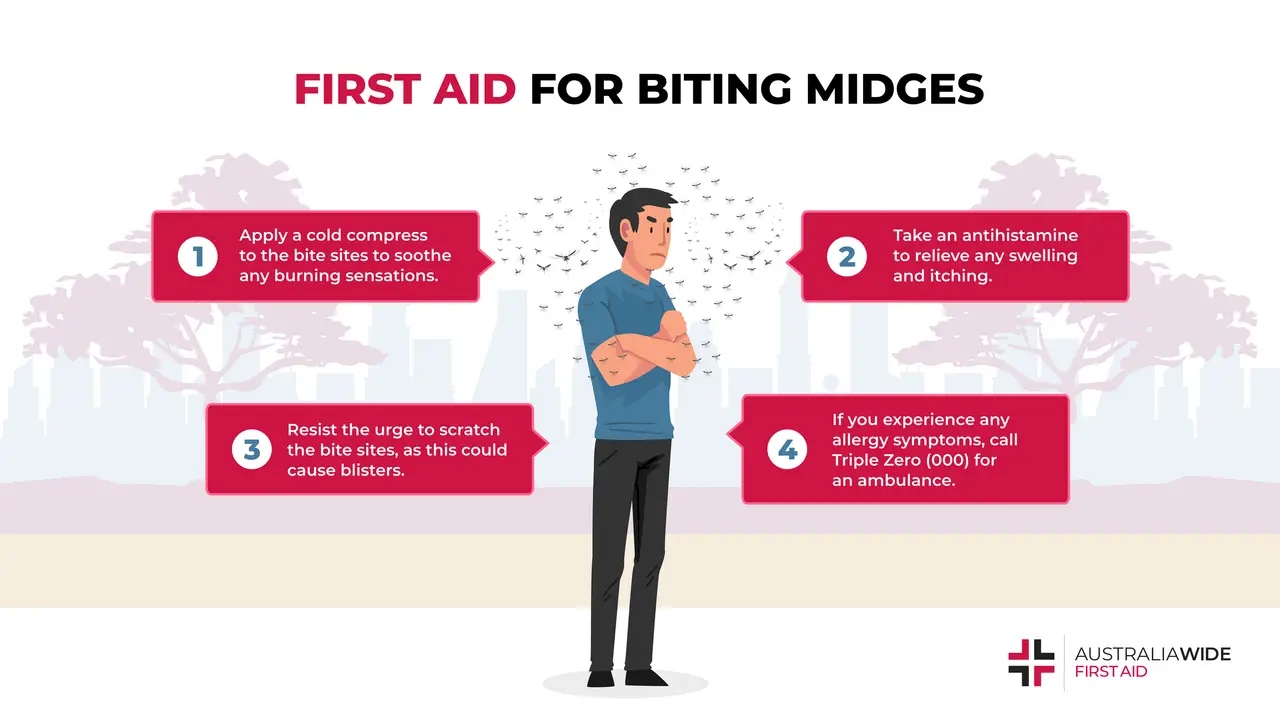

Only the female biting midge bites. She does this by breaking the victim’s skin and injecting saliva that prevents the blood from clotting. She then consumes enough protein from the blood to help develop a batch of eggs.
This article reveals the details about the behaviour of the biting midge, its risk to humans, and the everyday precautions you can take when dealing with this tiny terror.
More than 200 varieties of midges can be found in Australia. The insect follows a holometabolous life cycle which comprises four life stages: the first as an as egg, the second as a larva, the third as a pupa, and the last as a mature adult.
The average lifespan of an adult midge, depending on the individual species, is between a few days and several months.
The biting midge grows to approximately 0.5 mm to 4 mm long – about size of a pinhead.
Small though a biting midge may be, it often swarms with its peers to become a formidable pest.
This class of minuscule flies, known in Australia as biting midges is called "no-see-ums" in America, and classified under the family Ceratopogonidae.
Biting midges thrive in coastal habitats such as in the lagoons, estuaries, and mangrove swamps of Australia. They are particularly fond of making their homes in damp soil, damp beds of decaying leaf material, muddy and vegetated substrates, or tidal flats (hence the erroneous ascription of the alternative name “sandfly”).
The moisture afforded by these environments makes a perfect hatching ground for their eggs. Temperature is an equally important condition to the biting midge; they are most active in humid weather that’s between 27°C and 32°C, and they avoid the windy weather.
Midges rarely disperse very far from their breeding sites, and as such, most midge bites to humans happen near these conspicuous areas.
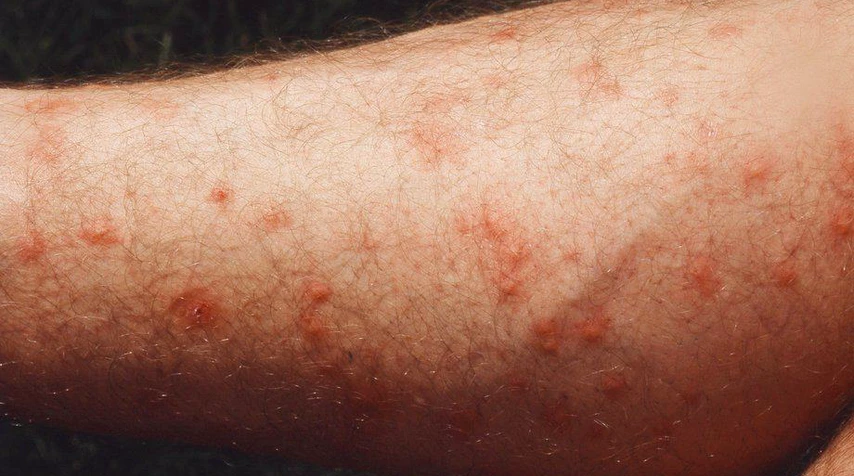
Some varieties of biting midge serve as vectors of deadly diseases to cattle, among them the blue tongue disease, African horse sickness, and epizootic haemorrhagic disease. There is no documented case of a biting midge acting as a vector for disease-causing pathogens to humans.
All the same, the midge can inflict a bite that swells, blisters, or weeps with clear discharge.
A bite can cause acute discomfort and irritation and, if scratched excessively and exposed to bacteria, it may become infected. In cases that are few in number but severe nonetheless, bites may trigger an allergic reaction and necessitate treatment for anaphylactic shock.
Over time and repeated exposure, local residents will cease to be bothered by biting midges. Still, they may prove a nuisance to tourists or new inhabitants of a coastal area. Sound first aid practices and enough foresight on everyone’s part will keep your community free of midge bites.
If you incur a bite from a biting midge, you should attend to it immediately in order to avoid complications. Basic first aid for midge bites can be completed in the following steps:
The prevention of midge bites is better than trying to cure them.
Actively avoiding midge-infested sites serves practical, as well as ecological purposes: as of this time, there is no chemical registered in Australia that can keep entire midge populations at bay, and excessive usage of pesticide may prove harmful for other species in the environment.
Australia Wide First Aid recommends taking the following precautions:
Bites and stings from midges, as with bites and stings from other Australian insects and arachnids, can be not only unpleasant but, considering anaphylaxis, also dangerous.
However, many such bites and stings are both treatable and easily preventable.
You can learn from the experts and gain considerable mastery over insect bites, anaphylaxis management, and other related first aid technique at an Australia Wide First Aid course.
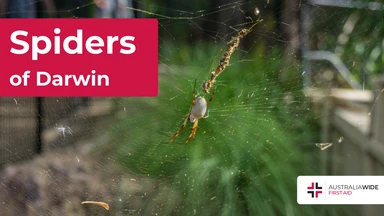
March 11, 2025
Darwin, the tropical capital of Australia’s Northern Territory, is home to a rich diversity of wildlife - including an impressive array of spiders. From the sprawling webs of golden orb-weavers to the cryptic camouflage of trapdoor spiders, these arachnids play a vital role in the local ecosystem. While some may inspire fear, the majority are harmless and even beneficial, helping to control insect populations.
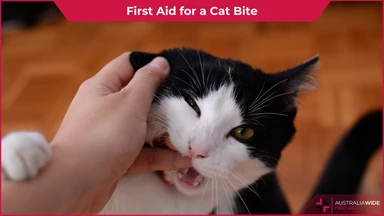
September 4, 2024
Cat bites, while often underestimated, can lead to serious health complications if not treated promptly and properly. Cats' mouths harbour a variety of bacteria that can cause infections in humans.
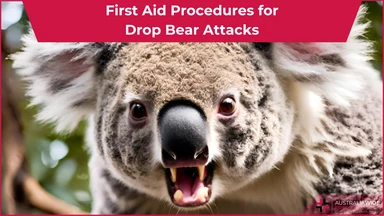
April 1, 2024
Encounters with wildlife can often be thrilling, but when it comes to the creature known as the drop bear, the experience can quickly turn dangerous. A sharp increase in recent attacks prompts the need for understanding proper first aid procedures in case of an attack.